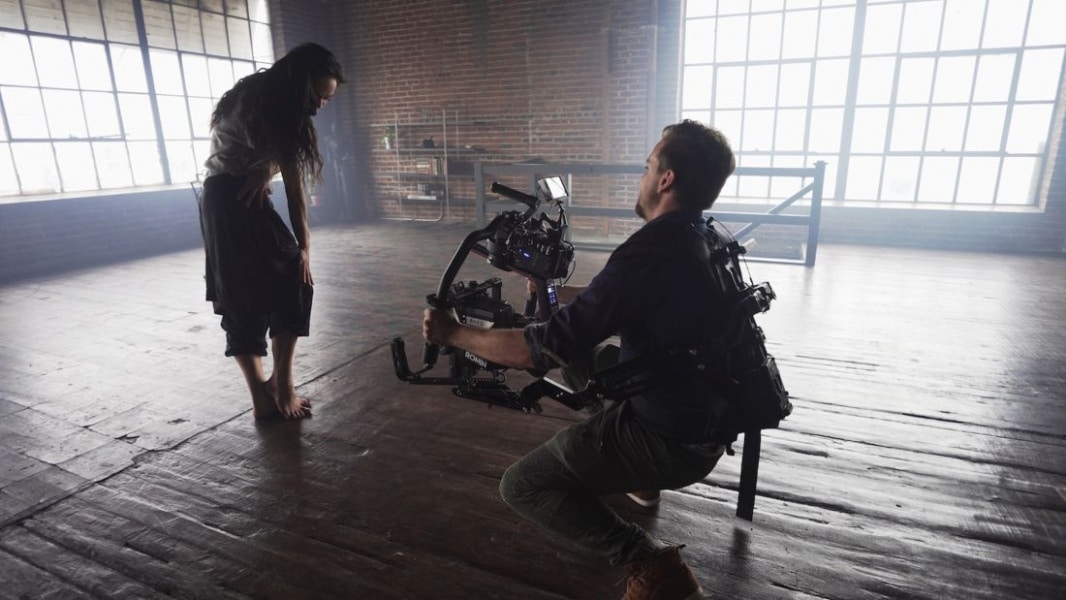David Ripert is Founder and CEO of the Augmented Reality startup POPLAR and board member of Sadler’s Wells, Save the Children UK and President UK of the VR/AR Association. Here, he explains how organisations can go about getting a deeper understanding of their audiences.
I’ve been working at the intersection of digital and the creative industries for a while now. 17 years ago I moved to Hollywood to produce movies. Then I worked at Netflix in the early days of subscription video, then Daily Motion, and then YouTube, where I was building studios for content creators, including artists that could come in and collaborate with one another but also collaborate with brands and use professional studios. Now I work with AR and VR, helping people create experiences for these emergent technologies. I’ve worked with hundreds of artists, creators and companies, and I’ve seen first-hand how the approach to audience – definition and discovery – has changed.
Once upon a time, if you were an arts organisation and you wanted to speak to the core constituency for your output, let’s say artistic work of whatever sort, you would probably do some press, get an interview, or maybe a listing in the broadsheet newspaper of your choice, and that would be it.
Audience led perspective
Now, obviously, things are things are somewhat different. When thinking about how it has changed, I find it helpful to approach things from an audience-led perspective. So, the obvious thing is to think about how people are consuming information, how they like to inform themselves. For example, I wake up, I listen to the radio while I am doing my gym, and then on to my read my favourite blogs on technology, through my browser on my phone; I might listen to podcasts, on iTunes, or Spotify; I might watch the show on Netflix in the evening.
So, we all have very different uses of media and technology and ways of informing ourselves. I personally, don’t read papers, physical papers anymore, and sales figures of print media worldwide suggest I’m not anomalous. I know there are a lot of people that do that. I don’t actually watch TV channels anymore. I watch subscription services like Netflix, Amazon, and others. If you start from the Gen-Z or ‘millennial’ perspective (and it’s important to remember that millennials aren’t kids any more – at the upper limit, these people are in their late 30s, with mortgages and children and careers), these guys were born on the internet. They basically made social media because Facebook and these platforms are born from their content contributions.
Even YouTube was created through people uploading their own videos and sharing that with our friends, and then you go to Snapchat and Instagram and all these different platforms that have created longer engagement view times for these people by encouraging shareability of content and ‘stickiness’, whereby people watch more.

It’s therefore vital to think about these different personas – millennials 30somethings, GenZ, art lovers in their 50s of a certain socio-economic profile, retired audiences…it’s vital for artists and institutions to understand how they consume content, because it’s really changed drastically.
Furthermore, for arts organisations, it’s also about how they buy tickets, which is a completely different thing to informing themselves; it’s important to understand that there is a difference between driving brand awareness, selling tickets and getting bums on seats in theatres.
Learn from others
It’s an area in which the arts can and should learn from marketing, advertising and PR. Concepts such as ‘top of funnel’ (getting people to be aware of you and your work so as to be able to convert them into buyers later on), and ‘personas’ (carefully-crafted descriptions of the various potential audience groups for a product or service, designed to enable marketers to better-define how to reach each audience, with which messaging, in which place), may not be oft-used in conversations around digital and the arts – but when it comes to finding and engaging with new audiences, they should be. Working out who you are trying to talk to, what you want to say to them and how you want to say it (medium vs message) is part not only of the process of raising awareness around a work but also of establishing and continuing a valuable dialogue with the public which can and should serve to enrich and evolve the artist or institution’s outputs.
One of the problems with the conversation around ‘digital’ when it comes to the arts is that it is a single term which can be and is used in such wildly divergent contexts – from the form of work, to its distribution, to its discovery, to the broader dialogue around the themes it embodies, and far beyond. People – by which I mean artists and institutions, though most often institutions – tend to run into trouble due to their inability to see the granularity of approach contained within the single term.
Of course, it’s also a truism to state that arts organisations are almost always, inevitably, cash poor, time poor, and staff poor, and the standard response to discussions about doing digital ‘properly’ or ‘well’ tends to be something along the lines of “we don’t have time, we don’t have money, we don’t have people or kit or skills – what are we meant to do?”
Where does an organisation begin defining which, out of these multiplicities of channels or approaches, is most important? When consumers have upwards of 10 different potential touch points in terms of media before breakfast, and given the aforementioned finite resources, etc, available to institutions, how will they potentially go about beginning to consider which of these multiple channels would make the most sense to them?
Prioritisation
It’s not possible to do everything – even global brands don’t attempt to work across all social platforms. Define what your organisational goals are. Let’s take brand awareness as an example – does the arts organisation feel happy about their brand awareness, and their audience diversity? If not, then I would definitely focus on social media as a good way to attract a younger audience, as an example, which is exactly what more traditional, older-skewing organisations like the Royal Opera House or English National Ballet do very efficiently. On Instagram, for example, they’ll do short stories backstage, they’ll give curation to one of the artists who for a day will vlog about their day-to-day experience of their art, presenting a personal, human and relatable face of the form which whilst not necessarily of interest to traditional audiences is exactly what will enable a younger demographic to connect with the work.
Put simply, it’s important, given these multiple channels, to have an understanding as an institution of the fact they’re all different ways to communicate with different people. It’s vital to have people in house who understand things like that, to have a digital director, or at least a community manager, who understands these platforms. Because otherwise, it might lead to having a Pinterest account where you’re posting photos of the plants growing outside of the venue. I’ve seen that; it’s not efficient.
You have to prioritise, of course. You don’t have to do Facebook, Instagram, Snapchat, Pinterest, podcasts, Spotify…I mean, it just doesn’t make sense.
Not everyone needs to make video, for example. Video is complicated, and it’s hard to do well – it’s a particular skillset that not everyone possesses, and that not everything is suited to. Again, it comes back to an understanding of your ‘brand’ – a term I know is often anathema to the arts, but which is important in the context of digital communications. What is the brand message? How do you describe your brand? Simply? Because if you don’t even know that, or if you can’t explain that clearly, how do you translate that onto all these platforms? Once you know who you are, and how you best describe yourself, then you can use that as in there for the content they put on those social platforms.
If you asked lots of arts organisations and institutions “who would you like to be your audience?” they would say, “Well, everyone. We want everyone to love us”, which is obviously a silly and meaningless response to that question. Similarly, the universal desire to “reach a younger audience” – it’s a constant refrain, but one oughtn’t ignore the fact that it’s often older audiences that are the main drivers of sales. Again, this comes back to knowing why you are talking to which group of people; perhaps with younger audiences it’s about making them aware of an institution or medium or show, to engender consideration in the future, whereas with older audiences it’s more about directing them towards your ticket sales portal.
How can organisations go about getting a deeper understanding of where these audiences are, what they want and how to get it to them? Digital analytics, in the first place – the power of Google Analytics, and the analytics tools available through the major social platforms, should not be underestimated when it comes to telling you who is responding to what content. Once you know that, it’s possible to quickly develop relatively sophisticated audience segmentation and targeting techniques with which to address these individual groups with bespoke content, delivered to them through the channels you know they prefer – and to start to build a relationship with them. Once this would simply have been ‘marketing’ – now it’s important to see it as a vital component in institutions’ and artists’ ongoing conversations with the arts-consuming public.

David is CEO and Co-Founder of Poplar, a platform that empowers users to create AR experiences and Chapter President for the UK VR/AR Association. For six years, David oversaw the EMEA arm of Google’s global YouTube division dedicated to working with creators, media companies and brands, identifying new and rising talent, driving innovation and building creator spaces for them to collaborate, learn and grow. He was previously VP of content at Dailymotion for 4 years in New York and Paris, after some years at Netflix in Los Angeles, where he started his career in film and TV 17 years ago.
How useful was this resource?